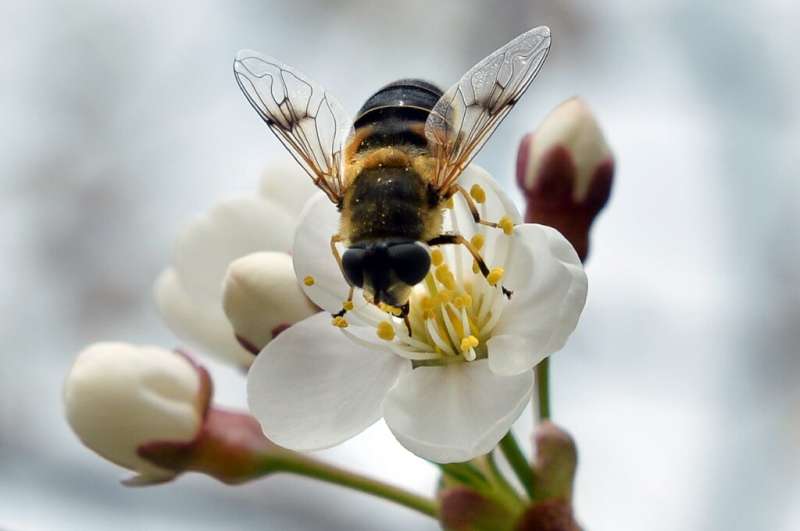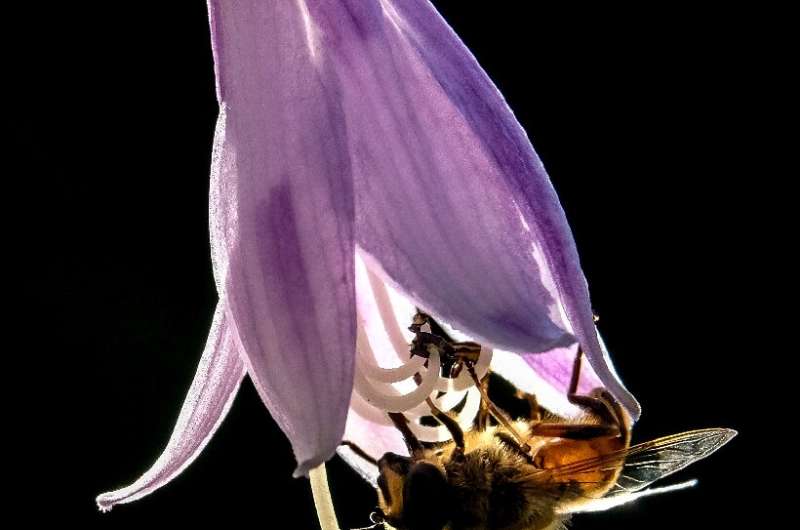Unsung heroes? How hoverflies play key pollination role

That bee you see buzzing from flower to flower might actually be an undercover operator: a hoverfly. And a team of scientists wants you to stop taking them for granted.
The decline of bee populations in mass die-offs, sometimes called colony collapse disorder, has made headlines in recent years.
Experts blame mites, viruses and pesticides for the phenomenon, which threatens the global food supply chain because bees fertilise three out of every four crops grown around the world.
Now a team of scientists is hoping the increased attention on the importance of pollination to our natural habitat will cast a light on the often-overlooked role of the hoverfly.
"When people talk about pollinators, they often think of the domesticated honeybee that has been part of our lives for thousands of years," said Karl Wotton, a senior lecturer at the University of Exeter's College of Life and Environmental Sciences.
"Hoverflies, in contrast, don't have this history, and bees often get undue credit from the casual observer as many hoverfly species are easily mistaken for bees," he told AFP.
Writing in the Proceedings of the Royal Society B: Biological Sciences journal, Wotton and his team argue the insects are sometimes even more effective pollinators than bumblebees and that their role in fertilising and protecting crops is often underestimated.
"Hoverflies show immense potential as alternative managed pollinators," the article argues.
"In addition, hoverflies provide ecosystem functions not seen in bees, such as crop protection from pests, recycling of organic matter and long-distance pollen transfer."

'We need them both!'
The humble hoverfly—frequently confused for a bee or wasp but exhibiting the levitating flight pattern that inspires its name—exists on every continent except Antarctica and a few remote islands.
There are around 6,000 species, which tend to range over much larger distances than their pollinator counterparts, carrying pollen much further afield.
This means they are capable of fertilising isolated plants and doing so in climates that are unsuitable for bees and other pollinators.
And while bee populations have suffered devastating collapses in recent years, there has been little evidence so far of similar hits to populations of hoverflies.
All of that provides ample grounds for the insect to be better appreciated and investigated, Wotton argues.
"We would love to encourage more research into the roles of hoverflies in pollination, particularly outside of temperate or Mediterranean habitats, but also more research looking into the provision of other ecosystem services they provide, like biocontrol of crop pests and the recycling of organic waste," he told AFP.
Wotton argues there is a "strong case" for diversifying the pollinators we rely upon for our crops.
"Managed hoverflies may prove to be particularly valuable under conditions where bees do not perform well, such as at extremes of temperature," he said.
But while he and his team would like to see the humble hoverfly given its due, there is no question of the insect being in line to replace the role of bees.
"Neither bees nor hoverflies on their own can provide the pollination capacity to sustain agriculture," Wotton said.
"Hoverflies and bees play different and equally vital roles in the natural world. We sorely need them both!"
More information: Toby Doyle et al. Pollination by hoverflies in the Anthropocene, Proceedings of the Royal Society B: Biological Sciences (2020). DOI: 10.1098/rspb.2020.0508
Journal information: Proceedings of the Royal Society B
© 2020 AFP




















